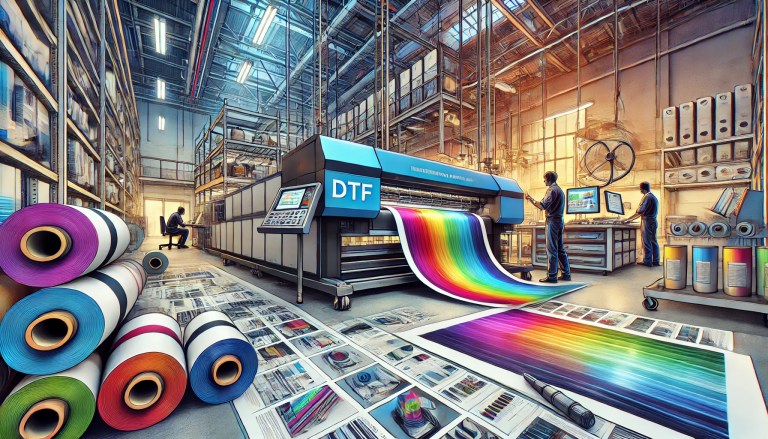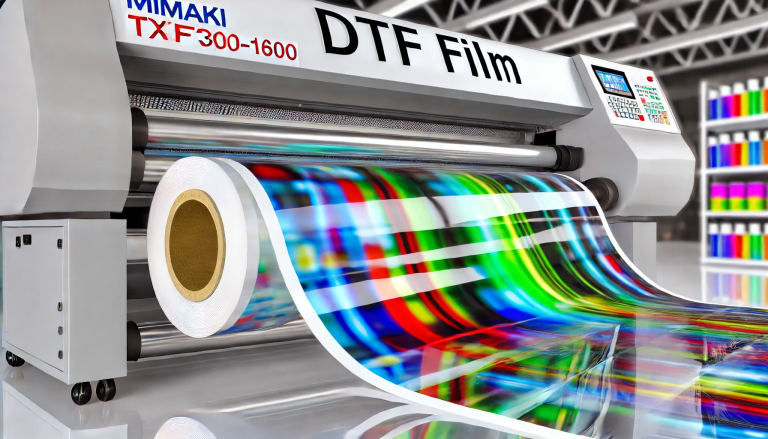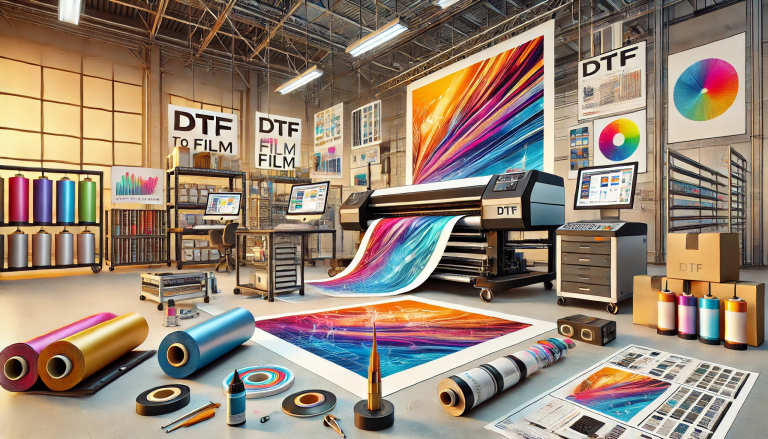“Is DTF Transfer Film A3 a Vinyl?” -MAXDTF- Direct to film transfer paper Manufacturer, DTF PET Sheets Supplier, Made in China
Part I: Understanding DTF Transfer Film A3 and Vinyl
To evaluate whether DTF Transfer Film A3 serves as a vinyl, we must first understand the individual characteristics and applications of these materials.
DTF (Direct to Film) printing is a technology that involves digitally printing a design onto a special PET film. This film, which can come in various sizes, including A3, is then coated with an adhesive powder and heat-pressed onto the intended material. The DTF process results in a high-quality, vibrant, and durable print, compatible with a wide variety of surfaces, including fabrics.
On the other hand, vinyl refers to a type of material commonly used in a method known as heat transfer vinyl (HTV) printing. In this process, designs are cut from the vinyl using a digital cutter and then heat-pressed onto the substrate. The final result is a durable design, often with a unique texture, depending on the type of vinyl used.
Part II: Comparing DTF Transfer Film A3 and Vinyl
When comparing DTF Transfer Film A3 and Vinyl, a few key differences come to light.
Firstly, the process: DTF involves digitally printing the design onto the transfer film, while vinyl involves cutting the design out of the material. This fundamental difference affects the level of detail and color variation achievable. DTF can reproduce intricate designs with multiple colors in one pass, while vinyl is better suited for simpler designs with fewer colors.
Secondly, the material properties: DTF prints are typically thin and flexible, blending seamlessly with the substrate and often providing a softer feel. Vinyl transfers, in contrast, are typically thicker and have a more noticeable texture, which can add a unique tactile element to the design but may not be as comfortable on wearable items.
Lastly, the versatility: DTF can be used on a wide variety of materials, including cotton, polyester, and blends. Vinyl, while also versatile, requires specific types for different materials and is often limited by the heat tolerance of the substrate.
Part III: Evaluating DTF Transfer Film A3 as a Vinyl Alternative
The question of whether DTF Transfer Film A3 can serve as vinyl hinges on the specific requirements of the printing project.
In terms of versatility, detail, and color variation, DTF offers distinct advantages. It can handle complex designs with multiple colors and works on a broad range of materials. However, if the project calls for a design with a unique texture or a smaller, simpler design, vinyl might be the more cost-effective and suitable choice.
It’s also worth considering factors like the available equipment, the volume of the print run, and the skill level of the operator. While both methods require a heat press, DTF requires additional steps and more precise control, which could influence the decision depending on the specific circumstances.
Summary
In conclusion, while DTF Transfer Film A3 and vinyl are used in similar heat transfer printing processes, they are fundamentally different in their material properties and applications. Whether DTF can serve as a vinyl depends largely on the specifics of the printing project, including the design complexity, material type, and desired texture. Both DTF and vinyl offer unique benefits and considerations, and understanding these can enable more informed and effective choices in the diverse and evolving world of printing technology.





